
IATS SEMINAR PRAGUE 2022
GABRIEL LAFITTE https://rukor.org
Expanded version of presentation in Prague 4 July 2022, in a panel on Pastoral culture in the Tibeto-Himalayan region: A study across space and time based on field and literature surveys
ANTHROPOCENE ACCELERATION OF TIBETAN LIVELIHOODS
ABSTRACT: Compulsory modernity with Chinese characteristics now inflects almost all aspects of Tibetan life, requiring rural emigration to new urban hubs, reframing of customary lifeworlds as semiskilled urban construction workforce employed precariously by gangmaster contractors in the accelerating urban construction boom. How does this rapid transition from rural life beyond the gaze of the state, to surveilled urbanisation, affect Tibetan lives? Who receives compensation for removal from pastures in the name of climate change mitigation of carbon emissions? Who benefits from accelerating industrialisation of Amdo, intensifying mineral extraction in U-Tsang and Kham? Who builds the strategic border village chain facing India, along the Himalayan north face? Is this “orderly withdrawal” from the rangelands gendered to favour men, privileging male access to retraining and construction industry skill sets? Who accumulates wealth generated by faster transport infrastructure, export of electricity from Tibet, intensive extraction, processing and refining of copper, lithium and other strategic minerals from Tibet? Is common prosperity a likely outcome, or exacerbated inequality?
These are urgent questions for Tibetans facing increasing demands to relocate and urbanise, in the name of poverty alleviation, climate adaptation, national park biodiversity protection, eco-compensation, provisioning of ecosystem services, income generation and more generally, development, modernity and civilisation, no longer “depending on the sky.” Despite the salience of these issues, research is limited, constrained by fieldwork limitations and opportunities for subalterns to speak. What are the implications for contemporary Tibetan studies as a field?
INTRODUCING CHINA’S FRONTIER CONSTRUCTION DEBATE
Excellent fieldwork done by Emily Yeh, Jarmila Ptackova, Emilia Sulek and many others gives us a rich picture of pastoral livelihoods across Tibet increasingly constrained by regulatory demands. Their insights enable us to ask: what next? What is the likely future of the mobile, extensive pastoralism which is the foundation of Tibetan civilisation? What is the master narrative driving China’s many programs to depopulate rural Tibet?
This political economy of development paper examines key official Chinese policy statements, which have been oddly absent from the discussion. The focus is on a school of thought calling itself Frontier Construction Theory, 边疆建构论, biānjiāng jiàngòu lùn, which identifies drivers underlying the assimilationist Minority Nationality Policy 2.0 that has been identified by research in recent years.
Frontier Construction Theory combines:
- aspects of neoliberal market economy factors of production, which presupposes many rural Tibetans are “surplus”
- security state concerns for border militarisation backed by loyal, secure rural barrier hinterland logistic supply districts
- rhetorics of development, poverty alleviation, lowland China’s water provisioning security, biodiversity conservation and degraded grassland restoration
TIBETANS AS FACTORS OF PRODUCTION
A political economy analysis builds on those fieldwork findings of ethnographers and geographers. Fieldwork highlights the gaps between official policy and actual impacts on Tibetan lifeworlds, as the policy of mobilising rural Tibetans into urban workforces continues to grow, by demobilising drogpa pastoralists off their rangelands.[1]
The paradox of mobilisation through demobilisation is central.[2] Mobilisation is a key concept of neoliberal economics. By definition labour is just one of the factors of production, traditionally alongside land and capital, to which China has recently added data. Since the invisible hand of market economics favours those geographies best endowed with opportunities to get rich, it follows that labour, especially labour surplus to the requirements of livestock or crop production, must mobilise and move to those areas where the other factors of production naturally congregate.
Thus far, this is standard neoliberal economics, even if Tibetology as a broad discipline, has seldom focussed on the economy of Tibet.

If we are to make sense of China’s program of nomad displacement, we need more than the pull of factor endowments. We also need the ideology of frontier construction theory, which skews the supposedly rational and inevitable flow of labour away from inefficient pastoralism in to the urban hubs and extraction enclaves where Tibetans enter modernity.
These two doctrines, of the mobility of factors of production, and frontier construction theory, at first glance seem compatible, and are treated as such by the party-state, and by leading economists such as Yang Minghong, whose IATS paper argues that what China has achieved in Tibet is a “miracle.”[3]
MASTER NARRATIVES CONTENDING
In practice, these doctrines of development and wealth accumulation clash with each other, and with the master doctrine of security as the top priority, which requires securitisation of Tibetans through intensive surveillance, grid management and demobilisation.
In theory, internal migration of labour is attracted by the higher cash incomes available in towns and extraction enclaves, even if the only employment available is casual, unskilled, hazardous gig economy precariat work, which is why a popular game in China’s gamerworld, depicting the pressurised gig workers and their injuries, is in Chinese called Super Majority, and in English Nobody.[4]

This is the pull of modernity, measurable narrowly as cash income. It is this GDP divided by population numbers that enables economists such as Yang Minghong to declare the miracle China has wrought in Tibet.
Yet the seemingly natural pull of urban income is accompanied by the push of state building frontier construction theory, which aims to displace Tibetans from their lands, then amnesically omit Tibetan narratives of identity and history, and establish Chinese stories that inscribe depopulated lands as Chinese. That is the overt purpose of frontier construction theory, , 边疆建构论, biānjiāng jiàngòu lùn, at the leading edge of the long agenda of making an empire into a unitary nation-state. The doctrine of frontier construction theory goes well beyond the pull of the market; it is a push factor that accelerates dislocation, exclusion, enclosure, displacement, accelerating the compulsory entry of rural Tibetans into urban modernity, at entry-level jobs in urban construction work under labour hire gangmasters.
Pushing Tibetans off their ancestral pastures is by now a policy decades old, and well studied by fieldworkers. Until recently, the primary rationale has been securing the water provisioning capacities of Kham and Amdo, designated as “China’s Number One Water Tower”, which makes them Chinese landscapes bundled anew as Sanjiangyuan -the three rivers source area- a term that has no equivalent in Tibetan.
However, as China’s wealth grows, demand for not only water but minerals and hydropower energy also grow, and now the slow process of declaring specific riparian pastures as core water provisioning zones, and land degradation repair zones, is just too slow for a more assertive China in a hurry.
Acceleration is the primary attribute of the Anthropocene, but in Tibet there are reasons for accelerating both the pull and push of depopulating the countryside. In addition to the pull of the market economy and the push of depopulation in the name of biodiversity conservation and poverty alleviation, there is the third doctrine that frames party-state policy: securitisation.
Securisation requires the entire Tibetan Plateau to be an enormous buffer barrier zone, with the transHimalayan belt of southern U-Tsang especially important as the ultimate frontier, to be secured both against India and against any possibility of Tibetan discontent.
Since urbanisation has long been the primary mode of growth, development and wealth accumulation, it readily follows that the engineering of security and modernity require urbanisation of Lhoka (Shannan) and Shigatse, especially the villagisation of pastoralists as well as crop farmers, with urban construction built by “surplus” pastoralists from further north, who do the low paid and dangerous work of construction of “xiaokang” prosperous villages, 边境地区小康村, biānjìng dìqū xiǎokāng cūn. Lhoka and Shigatse used to be large prefectures with modest urban hubs, officially local government areas of Tibetan autonomy. Now Shigatse and Lhoka (like Lhasa) are officially municipalities, which removes any legal privileging of any specific ethnicity. Municipalisation preceded urbanisation, but now these huge rural areas are actually being urbanised.
Urbanisation is foundational to securitisation, as it is conducive to surveillance, grid management and big data aggregation reliant on algorithms to identify deviant behaviour as soon as it manifests. Urbanisation is also a core strategy of frontier construction theory. The urbanisation of Tibet is construction in the most literal sense.
Yet the three dominant doctrines, of market economy, securitisation and frontier construction theory, do clash when it comes to the key question: who does the actual work of construction?
In Tibet, sourcing labour has long been problematic, because the thousand years old strategy of pushing and pulling poor peasants in to newly conquered lands, supported by garrisons of occupying troops who also generate demand for what the relocated peasants grow, just doesn’t work in Tibet. Frigid and hypoxic, the Tibetan Plateau is ill-suited to intensive small plot peasant farming, and Han sojourners experience it as alien, beyond the frontier, another country.
In this basic way Tibet is unlike China’s southern provinces which were gradually populated with loyal Han peasants over several centuries; also different to Xinjiang, where millions of Han did settle since the 1950s, parents of a next generation born in Xinjiang, who now regard it as theirs.[5]
NATION-BUILDING: THE LONGUE DUREE
The reluctance of Han to settle Tibet has been the core problematic of converting alien rule by conquest into a single unitary nation-state of a single Chinese race, with a single loyalty to Beijing. Hence the need for frontier construction theory, as a nation-building exercise in bringing the state in to Tibetan landscapes and lifeworlds, under a state empowered to direct and allocate population relocations, in order to accomplish securitisation and urbanisation.
Frontier construction theory is the dominant ideology seeking to solve these chronic constraints on converting an empire into a nation-state. Frontier construction theory brings together the demobilisation of nomadic mobility and the need for an industrial urban construction workforce in U-Tsang to build the string of model villages where Tibetans are to live under close surveillance, rendered visible to state scrutiny by aggregating them into xiaokang moderate prosperity villages.
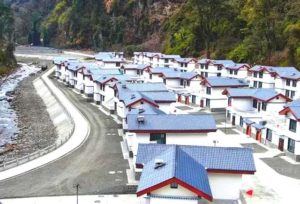
The core policies that depopulate the rangelands, transfer populations to border districts, recruit fit young adults to do the assembly work of fastening prefabricated concrete panels into a house, add up to a plan to strengthen the border districts facing India, populating them with resettled nomads loyal to the party-state because official patronage is their income.
The primary policy statement is 边境地区小康村建设产业发展指导意见, biānjìng dìqū xiǎokāng cūn jiànshè chǎnyè fāzhǎn zhǐdǎo yìjiàn, “Guiding Opinions on the Development of the Construction Industry of Well-off Villages in Border Areas.” In 2020 this was given accelerated priority by The Central Committee of the Communist Party of China and the State Council on the New Era Guiding Opinions on Promoting the Western Development and Forming a New Pattern.[6]
Frontier construction theory, in keeping with China’s increasingly assertive stance, welds together border security, broader frontier zone security, solutions to construction worker shortage, and the need to depopulate pastoral districts of their “surplus” population, in a coherent package.
In keeping with China’s fears of being surrounded by hostile forces, held back, contained or suppressed by gathering alliances, there is a new urgency to frontier construction, since it aims at not only a strongly militarised border with India, but a loyal hinterland of Tibetan counties and municipalities populated by dependents on official benevolence, under close scrutiny, leading largely sedentary lives visible to monitoring.
So urgent has this deep securitisation become, within frontier construction ideology there are now two contending schools; the newer and more strident school calling themselves the Frontier Construction Realists. Since, in official eyes, few Tibetans can be considered wholly trustworthy, especially in a crisis of torn loyalties, the time has come for a decisive demobilisation, reducing Tibetans to sedentary villagers of the border zone hinterland. This includes redefining the work the relocated Tibetans will do, not only urban construction but other largely sedentary work such as the breeding of livestock, with the pasturing done far away by others still on their lands. This is an integrated package. This, at scale, is new.
The strategy is new, and relies on new technologies such as big data algorithms to do the predictive policing work of suppressing dissidence the moment it arises. The technologies include mass manufacture of lightweight concrete panels made from coal fired power station toxic fly ash wastes in China, to be assembled by displaced Tibetans relocated to xiaokang border villages.[7]
But frontier construction theory , 边疆建构论, biānjiāng jiàngòu lùn, is not new. It has a long lineage, stretching back to the conquests of the early Qing dynasty at the height of their power in the early 18th century, creating a contiguous empire stretching far to the west of China, into the new lands of Xin jiang and into the Tibetan Plateau which, to this day, constitute close to 40 per cent of the territorialised geobody of China. The task of frontier construction is to convert alien rule into a contemporary nation-state with a single loyalty to the far distant metropole centred in the Zhongnanhai palace in Beijing.
Framed thus, frontier construction theory wrestles with a long, multi-generational task. Enze Han writes: “When an empire transitions into a nation-state, it often involves tremendous tension in the effort of forging one common national identity for a culturally diverse population. Some empires have been successful in building such common national identities, while others have failed miserably and ended up breaking into multiple independent nation-states.”[8]
Frontier construction stretches even further back, including the master narratives written by imperial annalists justifying conquest as beneficial for all, including the conquered. “In traditional Chinese historiography, the rhetorical devices used to elucidate the ways in which the Chinese state extended its political control over frontier area were for the most part self-validating. ‘Bandits’ were ‘punished’ (taofa), areas were ‘pacified’ (pingding), and recalcitrant frontier polities were ‘soothed’ (fu), instructed (lun) and ‘brought to surrender’ (xiang) -all with the stated purpose of bringing peace, order and a civilised way of life to the frontier and its inhabitants. But beneath this self-serving cant of conquest it is possible to discern much about the various stages and motives of Chinese expansion.”[9]
Today, this rhetoric declaring conquest, alien rule, displacement and relocation to be beneficial for the conquered, even a “miracle” of development, is reaching a new level of declamatory enthusiasm. In 2022 every Tibetan government, at regional and prefectural level, gushes with enthusiasm, and at length, about the wondrous transformation of Tibet by the latest wave of demobilisation of pastoralists, and their remobilisation as entry-level urban construction gig workers.
Since Xi Jinping presided over the 2020 whole-of-party-state-government Seventh Tibetwork Forum, there has been a torrent of policy decrees, all intended as accelerators of assimilation, and the remoulding of “surplus” pastoralists as urban construction workers. Among the welter of 2021 and 2022 frontier construction decrees are the Central Committee’s “Opinions on Comprehensively Deepening and Long-lasting Development of Ethnic Unity and Progress to Build a Consciousness of the Chinese Nation Community”, the State Ethnic Affairs Commission’s “Opinions on Doing a Good Job in Cultivating the Consciousness of the Chinese Nation’s Community”, “Opinions of the Tibet Autonomous Region on Comprehensively Promoting the Establishment of a Model Area of Ethnic Unity and Progress and Consolidating the Consciousness of the Chinese Nation’s Community”, “Regulations on the Establishment of a Model Area of Ethnic Unity and Progress in the Tibet Autonomous Region” , “Plan for the Establishment of Model Areas for Ethnic Unity and Progress in Tibet Autonomous Region ( 2021-2025 )”,“Regulations on Ethnic Unity and Progress in Lhasa City”, and“Lhasa City’s implementation of the Plan for the Establishment of Model Areas for Ethnic Unity and Progress in Tibet Autonomous Region ( 2021-2025 ) Implementation Plan”.[10]
It is inherent to frontier construction that its primary outcome is to strengthen the state; and equally primary is that the conquered are to be persuaded that this is for their benefit. As is evident from the titles of these decrees, the transformation of a skilled pastoralist society into a semi-skilled entry-level urban precariat is for their own benefit. This is the long tail of the centuries of China’s civilising mission to the conquered. Frontier construction is in command, more than ever.
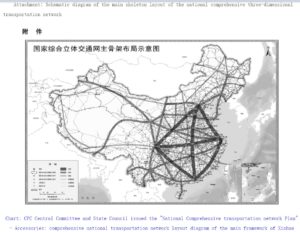
IS FRONTIER CONSTRUCTION A UNIQUELY CHINESE PROBLEMATIC?
While frontier construction theory is earnestly discussed in China,[11] there is almost no mention of it elsewhere. This seems to be primarily because it was never an issue for the scattered overseas empires of European imperialism, for whom border demarcations were settled by negotiations among European powers, with the colonised having no say at all. However, contiguous land empires such as China, the Ottomans, Russians and Habsburgs, all had to work hard at “forging one common national identity for a culturally diverse population”.
China’s systematic inscription of legally autonomous regions privileging named ethnicities was modelled on the republics of the Union of Soviet Socialist Republics. Throughout the second half of the 20th century that seemed to suffice: a balance between the slow work of forging one common national identity for a culturally diverse population, while, at least for some time, conceding cultural differences. In this century, the new normal has lost patience with the ungrateful and unintegrated Uighurs and Tibetans, especially their stubborn refusal to assimilate. Hence the formulation of ethnic policy 2.0, a more coercively assimilationist model grounded in frontier construction theory. Driven partly by anxiety that the dissolution of the USSR was precipitated by ethnic nationalism, the new policy seeks to accelerate frontier construction further.[12]
The classic frontier construction strategy, honed over the centuries of China’s southward and then westward expansions, was the tusi 土司 system of appointing local chiefs whose primary loyalty was to the empire, a kind of indirect rule; combined with settler colonialism.[13] What drove settler colonialism was push and pull: pushing desperately poor, landless peasants to migrate to newly conquered lands, and the pull of having a market to sell their crops in to, namely the garrisons of soldiers stationed in frontier lands to hold on to conquest.
The People’s Republic pushed large numbers of demobilised revolutionary army men to settle Xinjiang, but this classic frontier construction strategy just didn’t work in frigid, hypoxic Tibet.
Tibet is where frontier construction theory faced its greatest challenges, and it is only recently that a coherent strategy has emerged, which mobilises Tibetans as the labourers of urban construction, rather than relying on Han settlers who may be willing to sojourn in Tibet but not settle.

A RATE OF RETURN ON CAPITAL EXPENDITURE?
Until now, China has invested heavily in infrastructure construction across the huge size of the Tibetan Plateau, creating the necessary logistical preconditions for a frontier construction that achieves state-building intentions. This build took decades, was vastly expensive, generating diminishing returns on further investment, with Tibet, especially central Tibet, reliant on importing almost everything manufactured, and exporting very little. However, the vast capital expenditure on highways, railways, hydro dams, power grids, extraction enclaves, urban hubs, expressways and high speed electrified rail is now starting to generate returns, especially in resource extraction and urban construction, the two boom industries of central Tibet (TAR).
At last, after decades of counterpart aid, capex allocations, hard infrastructure construction, the party-state is tangibly present, and in command, across Tibet. That is the primary nation-building goal of frontier construction theory. Second generation ethnic policy, downplaying autonomy, emphasizing assimilation and a common destiny, is also part of frontier construction, as it clear away the obstacle of putative autonomy and the prospect of self-determination.
Having emplaced all necessary preconditions, frontier construction now moves to accelerate and complete the long term agenda of making China’s Tibet truly Chinese, populated by Tibetans removed from the high pastures, relocated to southern Tibet and in to village life, as construction workers, and livestock breeders buying genetics created by China’s scientists. These relocated villagers will be dependent on the party-state for transfer payments, enrolment in basic construction job training and certification, education in standard Chinese putonghua for all children, and for construction workforce entrants. The high-density new villages allow very little space for livestock. Everyone will depend on China for income, will be required to display suitable gratitude, and identify first and foremost as Chinese. Thus does the long agenda of frontier construction come to fruition.
That at least is the current theory; and the advent of a new, hard-headed school of “realist” frontier construction theory makes this agenda all the more urgent.
WHATEVER HAPPENED TO COMPARATIVE ADVANTAGE?
Thus far, the focus has been on what frontier construction theory overtly aims to achieve, and its strategies for doing so.
What we have not yet considered are the silences, the omissions and amnesias inherent in frontier construction theory.
Singularly silent, throughout the entire seven decades of China’s alien rule of Tibet, has been the core concept of neoliberal development economics: comparative advantage.
China claims to follow the “laws” of development, with miraculous results. Comparative advantage is foundational, a simple premise that every geography is good at something, and that something should become the basis of growth, through investing in value-adding, processing, upscaling and linking producers with distant markets.
The obvious comparative advantages of Tibet are dairy products, wool and other livestock products, traditionally produced in super abundance, and with major surpluses. All of Tibet’s surpluses are in great demand in lowland China, which has taken to yoghurt and milk tea as fashionable health foods, and has become the world’s biggest woollen mill making a full range of woollen products, from coarse wool beaten into felt for hats, through to the finest low-micron woollen cloth for high fashion and premium priced men’s suiting.
Yet China has never invested in these mainstays of the Tibetan pastoral economy, except for “demonstration industrial parks” on a modest scale. The potential for intensifying and value adding to Tibet’s strengths remains unrealised, reinforcing the widespread Han perception of Tibetans as poor, backward and uncivilised.
The explanation for this chronic under-investment is frontier construction theory, which aims to strengthen the presence and authority of the state, not strengthen the autonomy of the conquered.

In the absence of any other plausible explanation of seven decades of under-investment in rural Tibet, the nation-building agenda of frontier construction theory is the only way of making sense of all those decades of top-down, centralising heavy infrastructure construction, all of which extends the reach of the party-state into the remotest landscapes, including, via the ubiquitous smart phones Tibetans have, surveillance that extends to the remotest districts.
Frontier construction that makes Tibet China’s has been the primary driver of policy for decades, yet struggled to attain hegemony, despite succeeding elsewhere. Only quite recently has a new strategy emerged, which knits together all the problems of frontier construction in Tibet, into a single coherent solution.
SOLVING THE WICKED PROBLEM OF TIBET
The policies issued by the seventh Tibetwork Forum, in 2021, are the first comprehensive plans that achieve several long-standing goals that were announced in earlier Five-Year Plans, one after another, but implemented patchily and ineffectively.
To recapitulate, the problems the party-state faces in Tibet are many:
- -Tibet, especially TAR, remains anaemic, utterly dependent on central subsidies and transfer payments, exports very little, almost all growth comes from subsidies, not endogenous development
- -Tibet remains an embarrassment, anomalously failing to succeed materially, routinely omitted from cross-provincial economic analysis, its customary modes of production seen as primitive, yet no industrialisation has occurred, with a bloated, top-heavy services sector of administrators and security staffers providing the only growth.[14]
- -Tibetans on their rangelands are hard to keep visible and legible to the panoptic state gaze, and are utterly anomalous in a China that boasts it has transformed all landscapes, all social strata, and all modes of production out of primitivity and into modernity and efficiency
- -despite geologists finding in Tibet numerous large deposits of minerals in demand, especially for renewable energy, resource extraction remains limited, and the smelting of ore concentrates is done far from the few functioning Tibetan mines
- -in the name of poverty alleviation and environmental protection, drogpa have been steadily removed from pastoral livestock production landscapes, relocated to urban fringes with no modern workforce participation skills or vocational training, dependent on transfer payment handouts
- -China’s developmentalist strategy nationwide is to concentrate services in efficient urban hubs, but urban construction has been slow in Tibet, in part because there are few semi-skilled urban construction workers willing to come to Tibet, stay working year-round, doing casual and hazardous work on construction sites under gangmasters who enable builders to avoid decant pay, injury pay, pension requirements etc.
The new frontier construction strategy aims to solve all of these chronic problems. The construction of an archipelago of Tibetan high density, closely surveilled model villages, all along the border districts of southern Tibet, removes nomads from hinterlands beyond official scrutiny, trains them to do precariat construction work, sedentarises them in hundreds of small villages which can be presented worldwide as the arrival of both modernity and prosperity. Any unhappiness at mandatory relocation will be quickly suppressed, with the help of predictive policing algorithms that crunch the big data generated 24/7 by surveillance tech. It’s a win-win-win.

INVENTING THE DECISIVE SOLUTION TO CHINA’S TIBET PROBLEM
How did this breakthrough package come about? Before becoming policy at the highest level, this model needed hypothesizing, testing, assembling into a menu.
In a command-and-control system as rigid and centralised as China there seems little point in searching for the authors of policy, beyond the official author of everything, Xi Jinping.
However, it is sometimes possible to track influential intellectuals, whose ideas do shape policy. One example, at the highest level, is Wang Huning, the ideologue in residence within the CCP Politburo Standing Committee, whose writings frequently morph into the mass line. Many Sinologists seeking the origins of Xi Jinping’s authoritarian ideology discern a line of transmission from Wang Huning to Xi Jinping, a process that takes years.
Another example is economist Hu Angang and anthropologist Ma Rong, who formulated the assimilationist policy of down-playing ethnicity, reducing minority nationality to a personal choice of identity, no longer a collective status with legal rights to self-determination. In the name of forging a unitary nation-state, averting the danger of a Soviet style collapse, they proposed the mandatory assimilation path of recent decades, which has come to be known as second-generation ethnic policy.
Less well-known is another economist, Yang Minghong, author of much of the policies displacing Tibetan pastoralists from their homelands, in the name of efficiency, intensifying agribusiness and redeploying surplus rural Tibetans into the industrial labour market.
Yang Minghong, born 1968, has spent decades wrestling with frontier construction theory, 边疆建构论, biānjiāng jiàngòu lùn with a strong emphasis on the several provinces into which the Tibetan Plateau has been dissected. Frontier construction theory deals with those western provinces which remain raw, uncooked, undigested, to use classic Chinese metaphors. The reality that Han Chinese alien rule is still perceived by Uighurs and Tibetans as alien rule remains a wicked problem vexing Beijing for centuries.
Among Yang Minghong’ many publications: More than 100 papers in academic journals such as Ethnic Studies, China ‘s Industrial Economy , China’s Rural Economy, and “China Tibetology “; “Research on the Livelihood Development of Tibetan Farmers and Herdsmen” (Sichuan University Press, 2013), 《西藏农牧民的民生发展研究》(四川大学出版社2013; “Tibet Rural Public Product Supply Related Problem Analysis” (Sichuan University Press, 2010), 《西藏农村公共产品供给相关问题分析》(四川大学出版社2010); “Research on the Formation Mechanism and Management Countermeasures of ‘Company + Farmers’ Industrialization Risks” (Economic Science Press, 2009), ‘公司+农户型产业化经营风险的形成机理与管理对策研究》(经济科学出版社2009):”Theory and Policy Research on the Support of Leading Enterprises in Agricultural Industrialization” (Economic Science Press, 2009),《农业产业化龙头企业扶持的理论与政策研》(经济科学出版社2009);”An Empirical Study on the Leapfrog Development of Tibet’s Economy and Society” (China Tibetology Press, 2006), 《西藏经济社会跨越式发展的实证研究》(中国藏学出版社2006);”Theory of Agricultural Growth Mode Transformation Mechanism” (Southwestern University of Finance and Economics, 2003); “Research on the Benefit Compensation Mechanism of Returning Farmland to Forest (Grass): Taking the Upper Yangtze River as an Example” (Sichuan People’s Publishing House, 2002); “The Operational Efficiency of Agricultural Industrialization and Risk Prevention” (Sichuan University Press, 2001); “Theory of Regional Unconventional Development – Based on the Research of Several Ethnic Areas in the West” (Sichuan University Press, 2002); “Research on the Transfer of Surplus Labour in Tibet’s Rural Areas——Based on the Investigation and Analysis of Deji New Village in Zhanang County [Lhoka Dranang] Yang Minghong “Tibet Research” 2009: 1
Yang Minghong did the political economy fieldwork that fused the contradictions of official policy directives into a coherent strategy. Yang Minghong was a child in the Cultural Revolution, and by the time he got to college China’s neoliberal turn was fully in place. Development comes from growth, and growth is measured almost solely by GDP cash income. China claimed to be implementing laws of development known to be valid, and deployed, worldwide.
Yang Minghong has been publishing prescriptive advice on how to modernizes and integrate Tibet since his early twenties, as this century arrived. At first glance they are standard neoliberal development strategies, emphasizing extraction enclaves and intensified meat production while also closing much pasture to grazing, to conform to nationwide campaign slogans, popularly known as “grain to green”, which called for dryland/upland cropping to be reverted to forest and grassland, often by removing the graziers from their pastures.
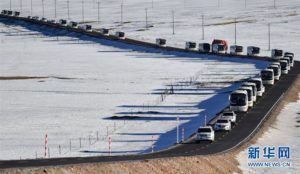
DEVELOPMENTALISM WITH CHINESE CHARACTERISTICS
However, frontier construction theory skewed the developmentalist program, which usually starts with identifying the comparative advantages of undeveloped districts, compared to adjacent, richer geographies. China’s frontier construction strategies have never invested seriously in enhancing Tibet’s comparative advantages, except in trivial and peripheral ways.

Frontier construction theory, often translated as frontier constructivism, suggesting an ideology of construction, is centred not on Tibetan communities but on the state, and the agenda of strengthening the nation-state. Strengthening customary Tibetan livelihoods, building linkages enabling them to market their value-added surpluses to China’s distant cities, was not at all what frontier constructivism aimed at. Making the party-state a presence in Tibetan lives and landscapes was the priority, coupled with a discourse insisting China’s nation-building capital expenditure in Tibet was the benevolence of the Han older brother towards the weak, anoxic, bloodless Tibetan younger brother, for which Tibetans should be grateful. Frontier construction theory is a strategy of colonisation.
Neoliberal development with Chinese characteristics has, in Tibet, routinely ignored comparative advantage, focussing instead on factors of production which favour the best endowed lowlands, to which surplus rural Tibetans should migrate to, as the primary way of generating greater measurable cash income. Since so little of the meat and animal products of Tibet enter the lowland Chinese market, it seemed obvious to economists such as Yang Minghong that the Tibetans were not only poor and backward, but also inefficiently scattered thinly across vast landscapes, making inevitable that many had to be surplus labour who could be mobilised to migrate to where key factors of production are naturally concentrated.
Given these deep misunderstandings of Tibet’s extensive pastoralism mode of production, the frontier construction agenda focussed on how to get surplus rural Tibetan labourers away from the land, and into urban centres, to begin the long climb of human capital formation, for which the prerequisite is putonghua Chinese language literacy.
The central party-state embraced frontier construction theory, investing hugely in infrastructure that binds Tibet to China, making Tibet not only China’s Water Tower but also an exporter of hydroelectricity (and more recently solar power) to distant Chinese provinces in need of more water and power. For decades central leaders financed the construction of railways, highways, fuel pipelines, urban hubs, hydro dams, power grids and mines, through many years when the rate of return was nil, as Tibet exported little. For this benevolence, gratitude was mandatory.
Frontier construction theory privileges the state as primary agent, and author of a modern Tibet. Local communities are passive recipients with no voice in planning. The funding allocated by central leaders could, by convention, count as GDP boost in Tibet, which then needed only to be divided by the number of people to show that incomes were rising, Tibet was growing and growing, development was happening.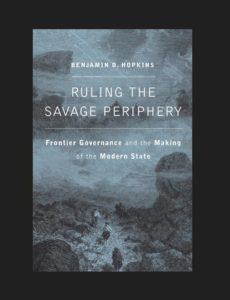
At the IATS Prague meeting in 2022 Yang Minghong vigorously promotes this as China’s great success: “The per capita GDP of the TAR has reached USD 8,042, and the per capita disposable income of farmers and herdsmen USD 2,246 in 2020.This income level places Tibet in the low-level income group compared to other regions in China, but in the high-level group compared to other countries and regions in the Himalayas. Tibet’s development can be viewed as a miracle in the Himalayas.”
OVERCOMING CONSTRAINTS ON COLONISING TIBET
A major constraint limiting this top-down frontier construction project was lack of labour. Unlike Xinjiang, it had not been possible to send millions of poor Han to settle in Tibet, the climate was too cold for standard peasant small plot farming. For a while, in the Maoist years, revolutionary enthusiasm for the civilising mission, enabled despatch of cadres to Tibet for long periods. Once that collapsed, with the failure of the Cultural Revolution, Han, especially poor Sichuanese peasants, were incentivised to go to Tibet. Not only could they make more money, they could flexibly switch hukou household registration, then switch it back again when returning home, after a rewarding sojourn in Tibet.
But labour shortage remained chronically problematic. At least 10 per cent of all Han who come to Tibet experience altitude sickness so badly they can only retreat. Few Han Chinese are willing to overwinter, beyond the frontier in permafrost, in what in every way seems to be a foreign land.
For decades, getting Tibetans off the land and into unskilled urban work, has been a priority for frontier construction theory. For decades, Tibetans have preferred their own pastures and families, to casual and dangerous underclass gig economy work on urban building sites. Central Tibet fell far behind its announced Five-Year Plan schedule of building medium sized hydropower dams across tributaries of the Yarlung Tsangpo and had, for several years, to import electricity from Qinghai and Sichuan.
Incentivising rural Tibetans to become mobile factors of production, on the move towards the favoured locations of capital, failed to pull in a new labour force to build those dams in remote rocky gorges, also failing because the security state commanded all Tibetans to be securitised under grid management and constant surveillance, rather than as floating free agents. The pull of higher cash incomes achieved little.
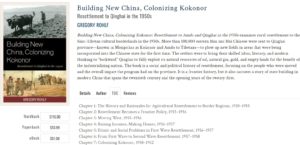
More recently, pull has become push. China’s wealth makes it easier to finance frontier construction infrastructure on a bigger scale. The new railway from Chengdu to Lhasa is double track and electrified, enabling high speeds and mass tourism arrivals; but building all those bridges and tunnels, overhead power lines and hydro dams to generate the electricity all require skilled Han labour but also a lot of grunt work, often dangerous, which means redeploying “surplus” Tibetans.
As a political economist, Yang Minghong has mapped that path for decades. He was appointed professor at Sichuan University in 2001, taking leadership roles in the Development Research Centre and the Western Development Research Institute.
Like many high profile economists in China he publishes prolifically, but most of his 100 academic papers and several books focus on the Tibetan frontier which, in his native Sichuan, is the upper 42 per cent of Sichuan by area, a large chunk of both Kham (Kandze prefecture) and Amdo (Ngawa prefecture).
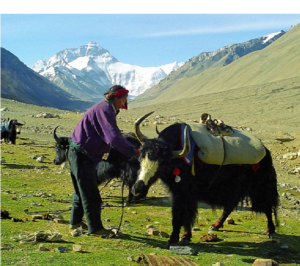 The first step in “mobilising” Tibetans away from their customary pastoralist mobility, and into an urban underclass, is to define many rural Tibetans as “surplus.” In reality the gendered labour of drogpa pastoralists is constant hard work, labour-intensive, especially in the warmer months. Yet Yang Minghong, in one of his publications, decided many were “surplus”, a rural proletariat who could be better deployed elsewhere. Yang Minghong, Research on the Transfer of Surplus Labour in Tibet’s Rural Areas——Based on the Investigation and Analysis of Deji New Village in Zhanang County [Lhoka Dranang] “Tibet Research” 2009: 1
The first step in “mobilising” Tibetans away from their customary pastoralist mobility, and into an urban underclass, is to define many rural Tibetans as “surplus.” In reality the gendered labour of drogpa pastoralists is constant hard work, labour-intensive, especially in the warmer months. Yet Yang Minghong, in one of his publications, decided many were “surplus”, a rural proletariat who could be better deployed elsewhere. Yang Minghong, Research on the Transfer of Surplus Labour in Tibet’s Rural Areas——Based on the Investigation and Analysis of Deji New Village in Zhanang County [Lhoka Dranang] “Tibet Research” 2009: 1
His second book, in 2006, was “An Empirical Study on the Leapfrog Development of Tibet’s Economy and Society” (China Tibetology Press, 2006), 《西藏经济社会跨越式发展的实证研究》(中国藏学出版社2006)He published in 2009, the book title “Theory and Policy Analysis of Agricultural Industrialization: Leading Enterprise Support”. The same year he published another book:” Research on the Formation Mechanism and Management Countermeasures of the Risk of Industrialization of the Company + Farmer Household”, which canvasses corporate contractual connections between industrial processors and upland livestock producers and crop growers, to generate a supply chain for lowland markets. This 2009 title does invoke comparative advantage, yet Tibetan producers remain price takers, contractually dependent on Chinese processors, who retain the profits of value adding. Far from enriching and empowering Tibetan livestock producers, they are reduced to bulk commodity producers, makers of generic producer goods, price takers with little say, yet stuck with all the risks.
These books were followed by “Tibet Rural Public Product Supply Related Problem Analysis” (Sichuan University Press, 2010), 《西藏农村公共产品供给相关问题分析》(四川大学出版社2010 and “Research on the Livelihood Development of Tibetan Farmers and Herdsmen” (Sichuan University Press, 2013), 《西藏农牧民的民生发展研究》(四川大学出版社2013)
ALTERNATIVE MODES OF EXCLUSION: NATURE OR PRODUCTIVITY?
Separating Tibetans from their pastures has also been the job of scientists, invoking the paramount priority of water provision and repair of land degradation, as grounds for exclusion. However, this is a slow process, requiring classification of landscape after landscape as core national park solely for grass production, necessitating removal of communities of land stewards. Other areas are designated as buffer or experimental zones, requiring restricted customary land use.
This is slow, hardly contributing much to the frontier constructivist agenda of making Tibetan landscapes into Chinese landscapes. So the economists of frontier constructivism are once again pitching their vision of development, in which surplus Tibetans are not only urbanised but also pressed to do the underclass work of construction, all of which can be badged as successful development.
Yang Minghong is not alone; frontier construction theory is a school of thought, and it has generated much debate, including an alternative approach known as frontier realism, 边疆实在论 biānjiāng shízài lùn. Both approaches are based on nation-building, and the Han agenda of producing a unitary, modernised identity embraced by all citizens, whose primary loyalty is to the party-state, transcending petty personal loyalties such as ethnicity.
Where they differ is that frontier construction theory grew out of standard social science relativism, which means defining the frontier as both objective and subjective, both topographic fact and cultural construct. The frontier realists are more literal and hard-headed, as are realist schools world-wide.  They take the frontier as objective, a found reality, a given, and in need of dissolution if a stable, secure and prospering nation-state is to be built. Both schools share the goal of dissolving difference, which requires dissolving ethnicity as a primary loyalty; and both propose similar strategies. In recent lengthy interviews Yang Minghong has insisted the contending schools are symbiotic and complementary.[15]
They take the frontier as objective, a found reality, a given, and in need of dissolution if a stable, secure and prospering nation-state is to be built. Both schools share the goal of dissolving difference, which requires dissolving ethnicity as a primary loyalty; and both propose similar strategies. In recent lengthy interviews Yang Minghong has insisted the contending schools are symbiotic and complementary.[15]
What matters is to persist with the program of extending and eventually dissolving the frontier, by central allocation of funding to emplace the infrastructure of modernity, which then enables the agricultural industrialisation Yang Minghong champions. His focus is on the several provinces constituting the Tibetan Plateau, less on Xinjiang, because in Xinjiang the Sinicization of the frontier zone is now generations old, with many millions of Han settlers who now regard Xinjiang as theirs, who find employment and income generation in the many industries serving lowland China’s markets, set up over several recent decades.
The Tibetan provinces remain frontier territory, with little industrialisation, few economic linkages to the big markets of lowland China, little of the consolidations, agglomerations, intensifications, accelerations of the standard urban modernity to be found all over China, except in Tibet.
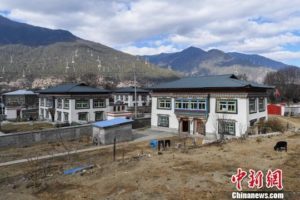
CONCLUSION
Like Wang Huning, Hu Angang and Ma Rong, Yang Minghong is a purveyor of political technologies designed to strengthen party-state power. Although he is not as well known as those ideologues of China’s uniqueness and of assimilation of minority nationalities, Yang Minghong has been highly effective in generating rationales for frontier construction presenting itself as a benevolent civilising mission to uplift poor and remote Tibetans, bringing them into history, modernity, urban life, progress, labour force participation, in short: development. The ideology Yang Minghong preaches extends the reach of the state deep into Tibetan hinterlands, excluding and removing “surplus” pastoralists in the name of progress.
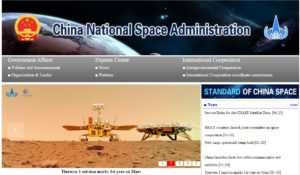
[1] Jarmila Ptackova, Exile from the Grasslands: Tibetan Herders and Chinese Development Projects
Seattle, WA: The University of Washington Press, 2020
[2] Gabriel Lafitte, Governmentalities, Situated and Abstract, in China, Nomadic Peoples, 24
(2020): 312–322
[3] MINGHONG YANG 07/July/2022: 11:15am-1:05pm · Location: Room 325, Charles U Prague Arts Faculty, A Miracle of Development in the Himalayas: Discourses, Actions and Challenges on Tibet’s “High-Quality Development”
[4] https://www.youtube.com/watch?v=J5KVau1QnrQ
[5] Judd C. Kinzley, Natural Resources and the New Frontier: Constructing Modern China’s Borderlands, U Chicago Press, 2018
[6] Central Committee of the Communist Party of China and the State Council on the New Era
Guiding Opinions on Promoting the Western Development and Forming a New Pattern 17 May 2020
http://www.gov.cn/gongbao/content/2020/content_5515272.htm
[7] https://rukor.org/prefabricated-toxic-homes-for-nomads/ Rukor 2019
[8] Enze Han, Contestation and Adaptation: The Politics of National Identity in China, Oxford, 2013, 28
[9] John E. Herman, The Cant of Conquest: Tusi offices and China’s political incorporation of the southwest frontier, in Pamela Kyle Crossley ed., Empire at the Margins: Culture, ethnicity and frontier in early modern China, California University Press, 2006, 135
[10]中央《关于全面深入持久开展民族团结进步创建工作铸牢中华民族共同体意识的意见》、国家民委《关于做好铸牢中华民族共同体意识的工作意见》《西藏自治区关于全面推进民族团结进步模范区创建铸牢中华民族共同体意识的意见》《西藏自治区民族团结进步模范区创建条例》《西藏自治区民族团结进步模范区创建规划(2021—2025》《拉萨市民族团结进步条例》《拉萨市贯彻落实<西藏自治区民族团结进步模范区创建规划(2021—2025年)。These decrees are lengthy and detailed prescriptions on what is to be done. See https://www.lasa.gov.cn/lasa/fzgh/202112/1350ef5f480240d4b97ae54d008c1d46.shtml for a 5000-word summary, 15 December 2021.
[11] “Frontier Constructivism” and “Frontier Realism”: “边疆建构论”与“边疆实在论” Opposition or Symbiosis? —— The professor discusses with Yang Minghong, Journal of Xinjiang Normal University: Philosophy and Social Sciences Edition , 2018“边疆建构论”与“边疆实在论”:对立抑或共生?——兼与杨明洪教授商榷
[12] James Leibold, Planting the Seed: Ethnic Policy in Xi Jinping’s New Era of Cultural Nationalism, https://jamestown.org/program/planting-the-seed-ethnic-policy-in-xi-jinpings-new-era-of-cultural-nationalism/ Dec 31, 2019
[13] Shaoxiong Zheng, Hanzang Zhijian de Kangding Tusi: Qingmo Mingchu Modai Mingzheng Tusi Renshengshi [Kangding Chieftains between the Han and Tibetans: A Life History of the Last Mingzheng Tusi] SDX Joint Publishing Company, 2016
Qiongshi Zeng, ‘Tusi Zhengzhi de Shijie Ditu: Yixiang “Zhongjianquan„ Zhengzhi Guocheng de Lishi Renleixue Yanjiu’ [World in Tusi Politics: Historical Anthropology of the Intermediary] PhD Diss., Zhongyang Minzu University, 2009
[14] https://rukor.org/tibet-an-embarrassing-laggard/
[15] https://www.sohu.com/a/346508426_618422
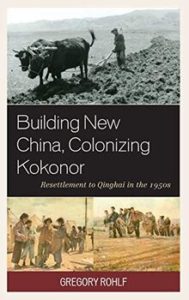
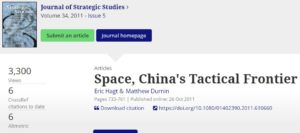
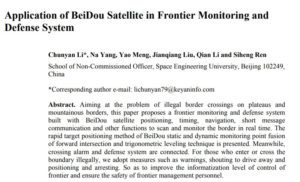

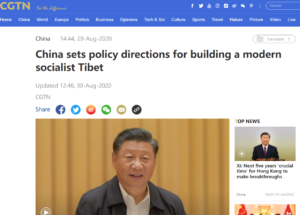
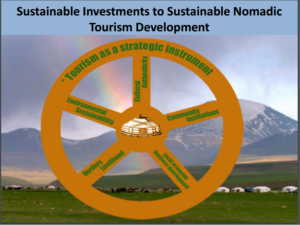
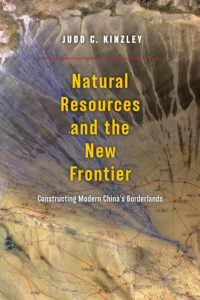
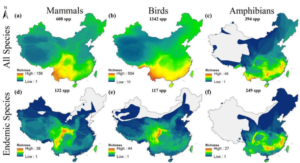
2 replies on “CHINA’S FRONTIER CONSTRUCTION THEORY”
[…] A political economy analysis builds on those fieldwork findings of ethnographers and geographers. Fieldwork highlights the gaps between official policy and actual impacts on Tibetan lifeworlds, as the policy of mobilising rural Tibetans into urban workforces continues to grow, by demobilising drogpa pastoralists off their rangelands.[1] […]
[…] paradox of mobilisation through demobilisation is central.[2]Mobilisation is a key concept of neoliberal economics. By definition labour is just one of the […]